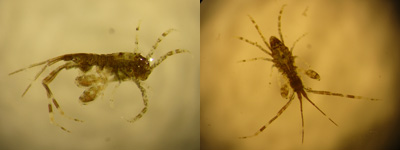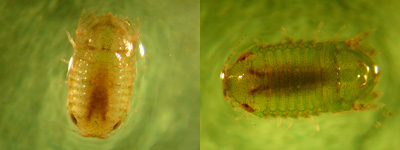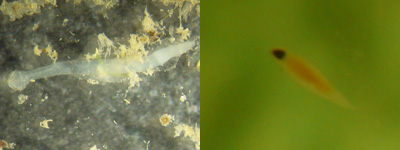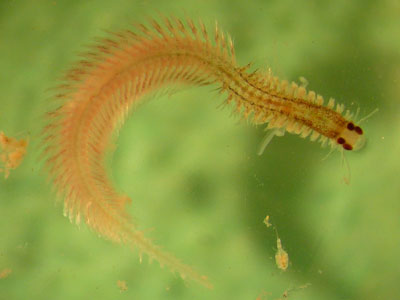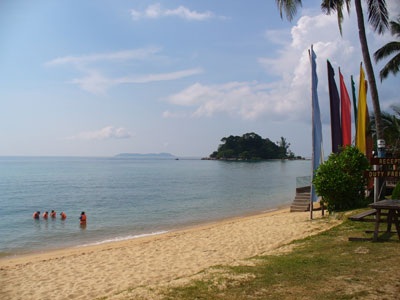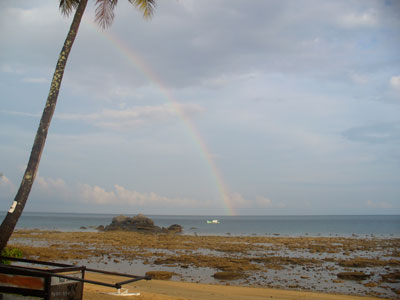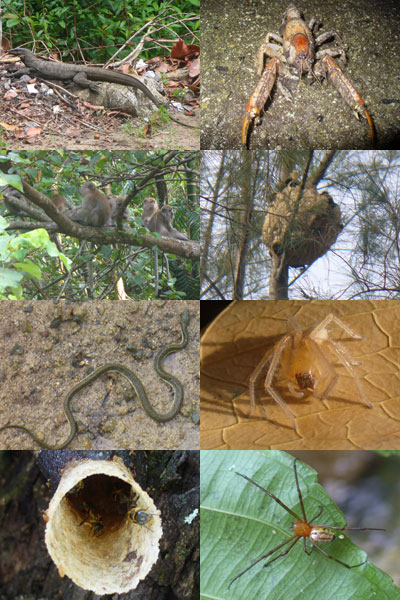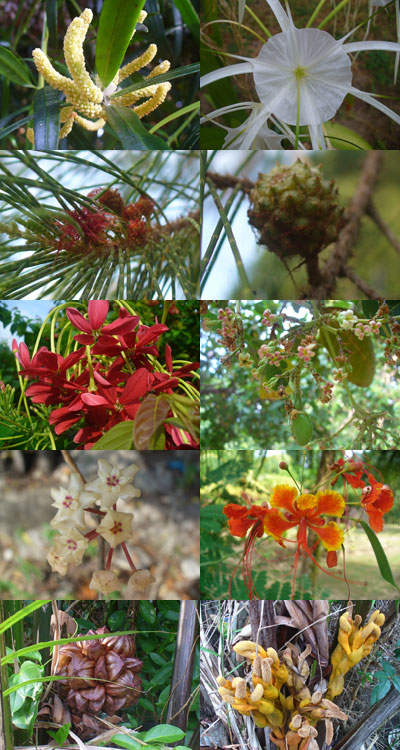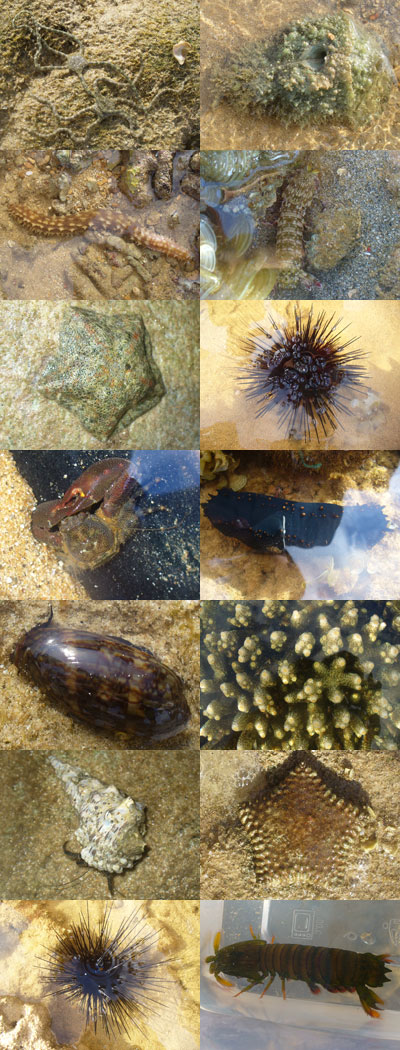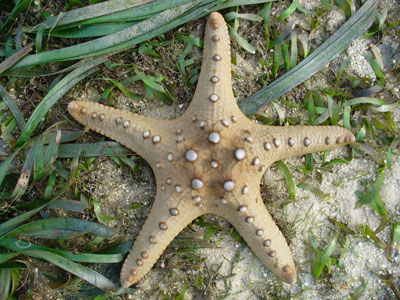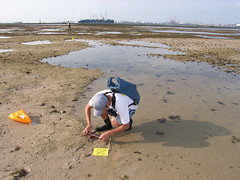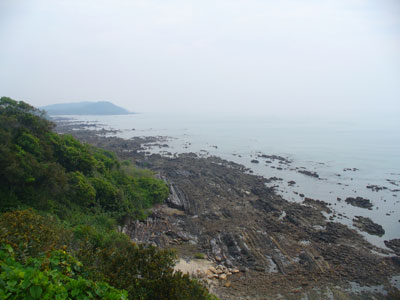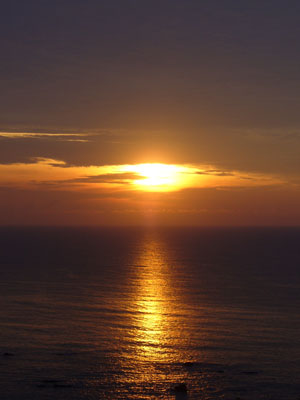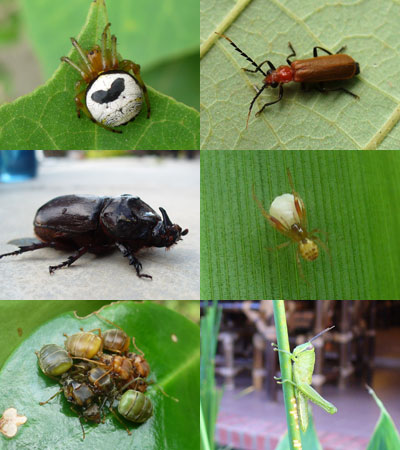It's back to Semakau again. Count number three.
Morning was good till we reach Semakau - it started pouring... So we decided to slack a little, excuse being to wait out the rain, and had a short briefing right at the doorsteps of the NEA building. When the downpour changed into a drizzle, we started off on foot to the shore.
Today I'm paired with Yixin, a newbie of TSG. I didn't realise one thing till Jerald (coordinator of the day) brought it up. This is his third TSG trip and for the past two, I've been always his buddy. Jerald was like complaining why Siti broke the two of us up. Lol...
Nevertheless, newbie saved me from the recurring nightmares of my initial smart excuse... OOPS! I meant reasoning, which came back to bite me. To the hell with Site 2! Here I come Site 1!

Site 1 Transect 2 is really interesting. There was lesser and lesser seagrass cover as we went down the line, to virtually empty barren sand. From left: Quadrat at 5m, 25m and 45m.
With the speedy work, Yixin and me started exploring. Other than the usual corals everywhere, it was a little disappointing as there wasn't much.
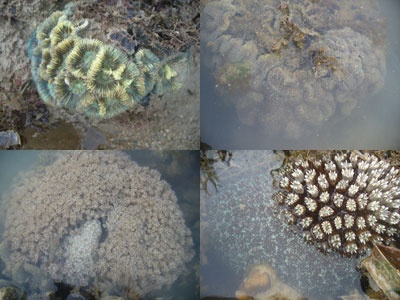
From top left, clockwise: Possibly a
Oulophyllia sp.??,
Lobophyllia sp.,
Goniopora sp. and
Galaxea sp.
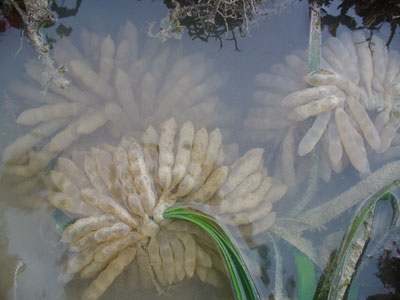
Large amount of squid egg capsules.

Cute little puffer fish that ram ashore, while darting around in the water. Saves us the trouble catching it to photograph.
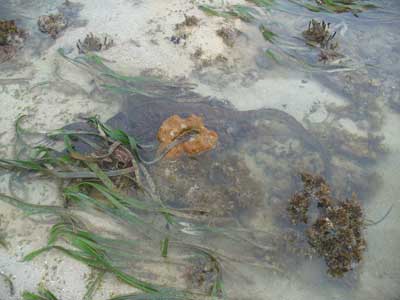
While walking, Ayesha (another newcomer, correct me if I get your name wrongly) nearly step on this... A monitor lizard soaking itself in the cooling water just by the reef edge! It was huge, at least a good 1.5m. Neat!
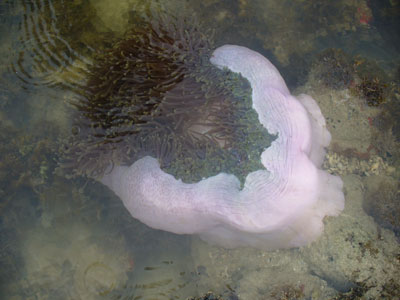
Found this Magnificent Anemone (Heteractis magnifica). Too bad Nemo's not home...
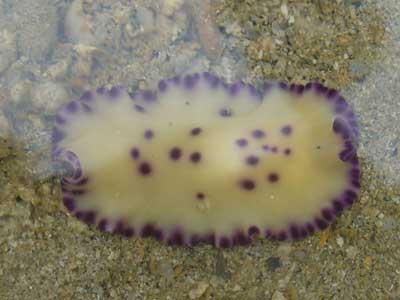
Saw this beauty on the way back also. Don't know the ID of this flatworm thou.
Chay Hoon and I was trying to find our usual nudis, but was not in much luck till...
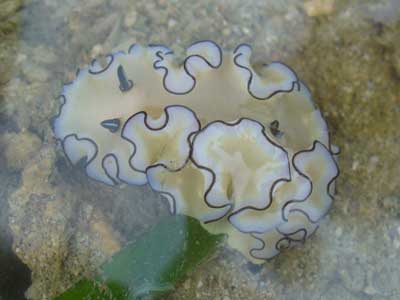
She spotted this
Glossodoris atromarginata. The only nudi for me today...
Being the usual eagle-eyed Chay Hoon, she spots this too.

Looks familiar? I know ya going to say mushroom coral, but it is not. It was about 4-5cm in diameter, and in fact is an anemone! No idea of the ID, awaiting confirmation.
Despite the rain, it's still a nice day. Especially with the lunch at Botanic Gardens, where everyone gobbled up their food and stoned. =D



